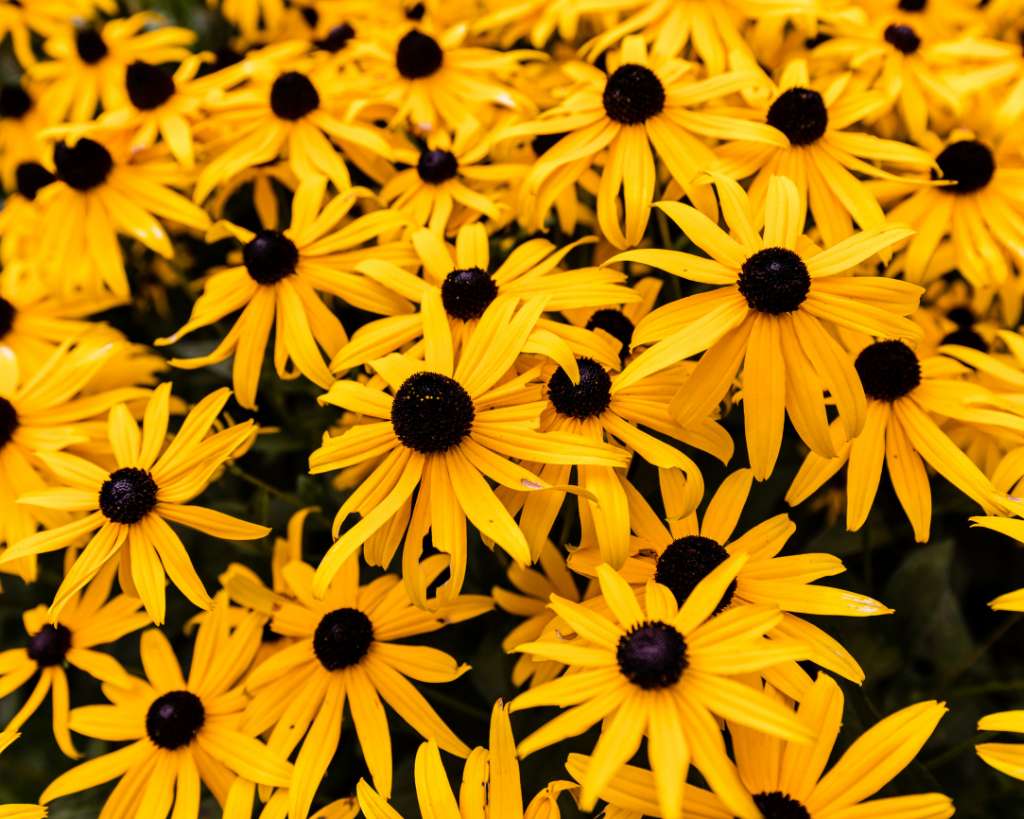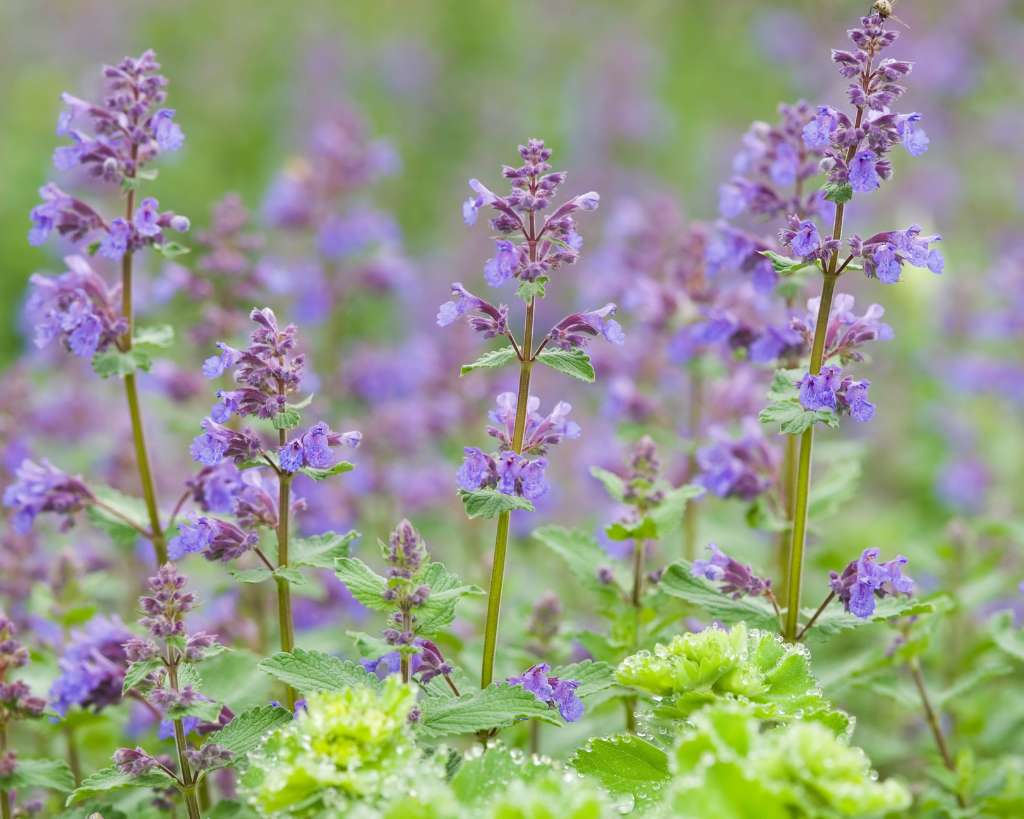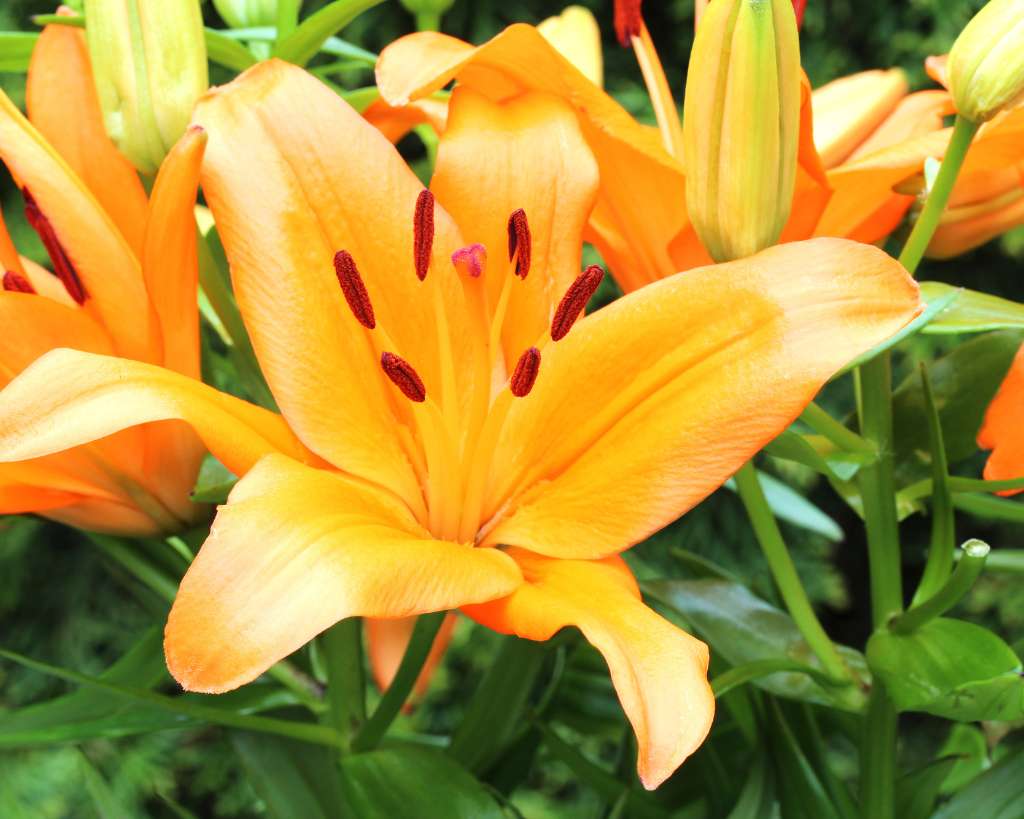Lamb’s Ear (Stachys byzantina) is a popular ornamental plant known for its soft, furry foliage. It is a staple for children’s gardens because they love playing with Lamb’s Ear’s fuzzy, velvety foliage.
Many gardeners love to plant Lamb’s Ear with other companion plants to give an artistic look to their gardens. It is considered by many as a perfect ground cover, can be planted in rock and gravel gardens, and makes a great edging plant for driveways.
In this article, we will discuss the different drought-tolerant plants considered good Lamb’s Ear Companion Plants.
Top 3 Best Lamb’s Ear Companion Plants
Lavender

If you have kept in mind a contrasting color scheme for your garden, then Lavender’s purple-colored woody stems would look great with the soft, silver-gray leaves of Lamb’s Ear. For a small garden space, this combination looks beautiful. Many gardeners love to enhance the richness of their gardens by interplanting these two beautiful plants.
Aside from their pleasing appearances, Lavender and Lamb’s Ear also have similar growing requirements. Both plants prefer well-draining soil and full sun or partial shade, making them well-suited for planting together in the same location.
Lavender is also known for its aromatic properties and can add a pleasant fragrance to the garden when paired with the soft, velvety leaves of Lamb’s Ear.
Russian Sage
Another perennial plant with purple flowers that grow well with Lamb’s Ear is Russian Sage. Both these plants present an eye-catching look for the borders of a pathway or a lawn.
Russian sage has tall, slender spikes of purple flowers and silvery-gray foliage, while Lamb’s Ear has soft, velvety leaves that are typically silver or gray.
Both these plants can grow well in similar conditions with little to no maintenance. Additionally, these plants attract pollinators to your garden, and they are known to conserve water as well.
Black Eyed Susan

Black-eyed Susan is a flowering perennial native to North America and is known for its bright yellow or orange flowers with dark centers. It is a hardy plant that can thrive in various soil types and is drought-tolerant once established. It typically grows about 1-3 feet tall and wide and blooms from mid-summer to fall.
Together, these plants can create a stunning visual display in the garden. The bright, colorful flowers of the black-eyed Susan contrast beautifully with the soft, velvety leaves of the Lamb’s Ear, creating a textural contrast that is visually appealing and interesting to touch. In addition, both plants are relatively low-maintenance and are easy to care for, making them a great choice for gardeners of all skill levels.
Also Read: Lamb’s Ear vs Mullein: Which is Better for Your Garden?
Other Companion Plants
Sedum
If you are thinking about planting a bright-colored flowering plant in your garden, then sedum is a good choice among Lamb’s Ear companion plants. Sedum Autumn Joy and Sedum Autumn Charm are two attractive varieties which look amazing when planted near Lamb’s Ear plant.
Both plants are drought-tolerant and can thrive in well-draining soil, making them well-suited for dry, sunny locations. Sedum is a natural pest repellent and can help deter harmful insects from attacking Lamb’s Ear.
Catmint

This lovely aromatic plant comes from the mint family, which is well-known for its pest-repelling properties. Also known as catnip, the plant grows several feet high, which looks compelling when planted next to low-growing Lamb’s Ear varieties such as ‘Big Ears’.
Catmint’s aromatic foliage can repel harmful insects and help deter them from attacking Lamb’s Ear. Both these plants are awesome pollinators that benefit other plants in your garden.
Catmint needs the same growing requirements as Lamb’s Ear. It is one of the best Lamb’s Ear companion plants you can grow without hassle.
Coneflower
A popular flowering plant that gives a pleasant visual appearance to your garden. For gardeners that love to have an attractive color bed, coneflower is a good choice for companion planting with Lamb’s Ear.
Mostly known for their purple colored blooms, they do come in other colors such as red, white, and gold. Gardeners usually plant the purple colored variety with Lamb’s Ear to give their yard a decent textural effect.
Both plants are relatively easy to care for and thrive in various soil types and growing conditions.
Daylilies

One of the easiest Lamb’s Ear companion plants to grow in your garden is Daylily. The lovely yellow blooms of Daylily complement the silver-green foliage of Lamb’s Ear pretty well throughout the spring and summer.
They are easy to care for and can be used in various landscaping settings, including borders, rock gardens, and naturalized areas.
Yarrow
Like Daylilies, Yarrow and Lamb’s Ear are different plants that can be grown independently in the garden. However, some gardeners plant them together because they have complementary colors and textures and create a cohesive landscape style when planted together.
Plants To Avoid Growing With Lamb’s Ear
Cucumbers

Lamb’s Ear is known to be susceptible to powdery mildew, which can cause serious damage to cucumber plants.
Zucchini
The same problem of powdery mildew affects cucumber crops. Other plants, such as pumpkins and melons, should be avoided growing near Lamb’s Ear.
References




[…] Also Read: 8 Lamb’s Ear Companion Plants To Transform Your Garden […]